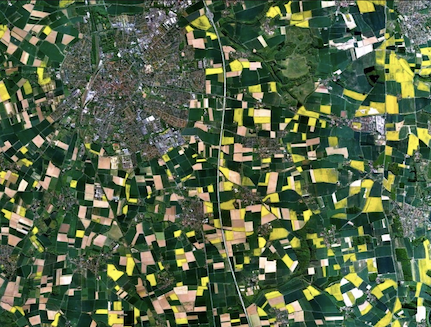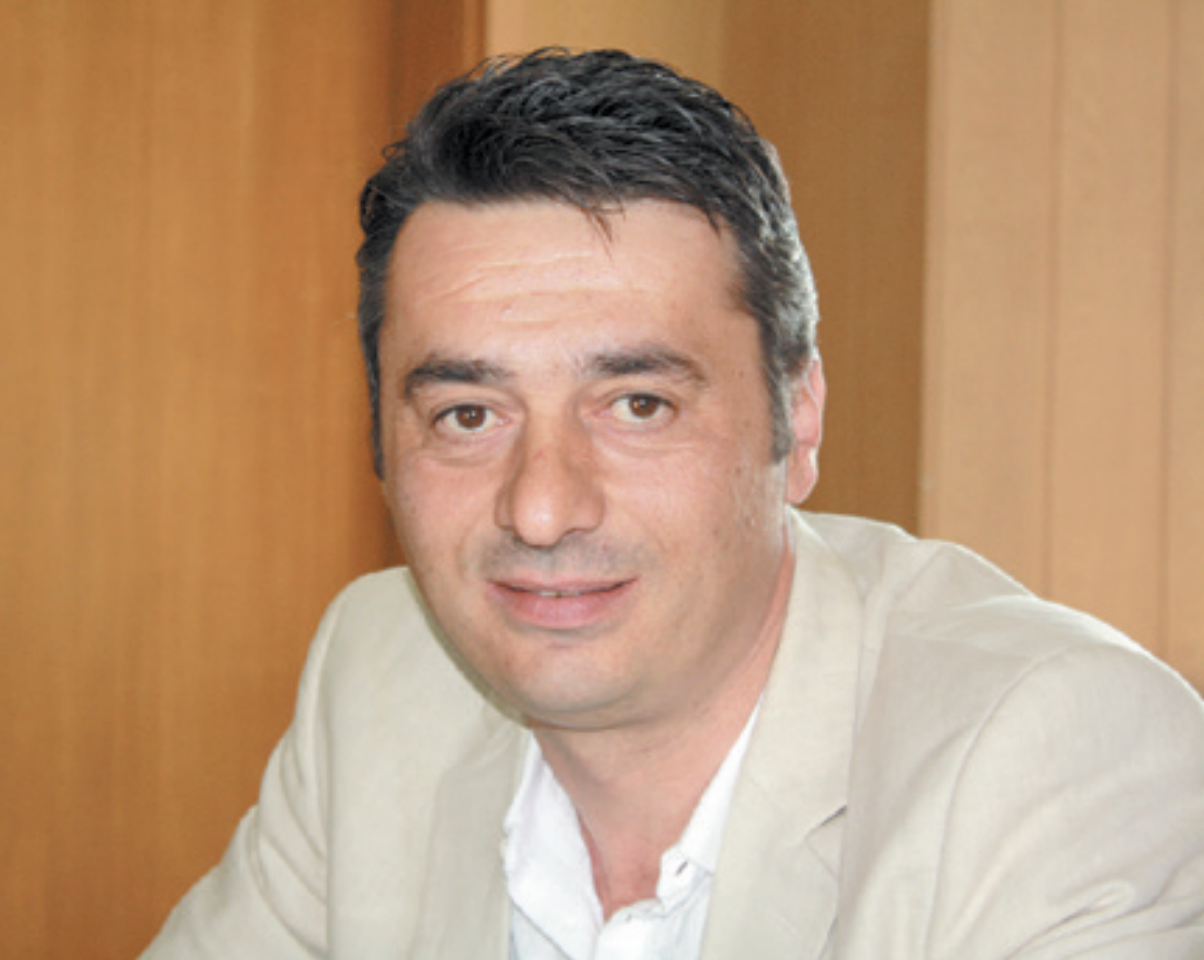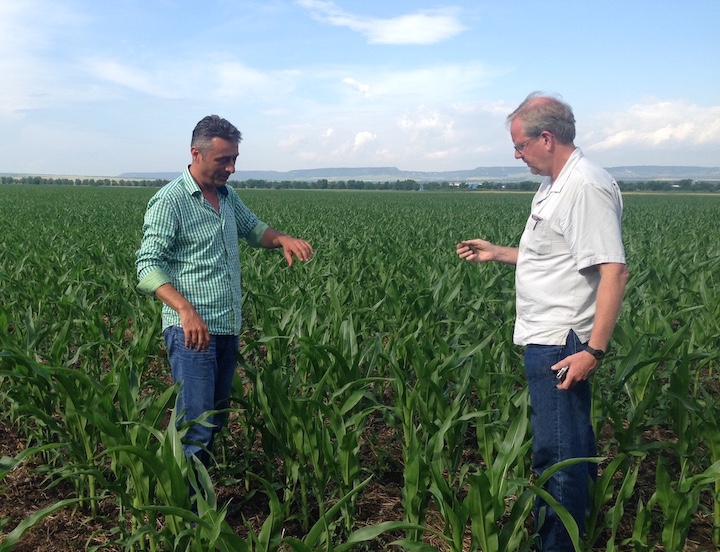 The dry fall and the heavy winter rains destroyed much of Bulgaria’s rapeseed harvest six years ago. The bright-yellow areas that traditionally emerge on Google’s satellite maps at this time of year were conspicuously absent from April to May 2012. Martin Draganov’s rapeseed plots near Novi Pazar in Northeast Bulgaria were among the few splashes of color in the grayish-green satellite images.
The dry fall and the heavy winter rains destroyed much of Bulgaria’s rapeseed harvest six years ago. The bright-yellow areas that traditionally emerge on Google’s satellite maps at this time of year were conspicuously absent from April to May 2012. Martin Draganov’s rapeseed plots near Novi Pazar in Northeast Bulgaria were among the few splashes of color in the grayish-green satellite images.
Rapeseed is a demanding crop that requires great precision in planting and growing, which is why many farmers avoid it. Martin cultivates rapeseed because of the lucrative export opportunities and because it is exactly the type of challenge that motivated him to start farming in the first place two decades ago. In 2012, his harvest survived thanks to an innovative planting method developed in the United States that he had adapted to local conditions.
“We can’t do much about limiting factors like the weather, but we can be more effective and influence yields and costs by applying modern methods and technologies. Contrary to popular belief, modern agriculture is extremely dynamic, people are experimenting constantly, and the emerging technologies are better and better. I try to learn from the best practices and to apply them here in Bulgaria,” he says.
Martin didn’t start out as a farmer. He has a degree in finance and had a successful construction business in the early 1990s, but being an experimenter at heart, he bought the former agricultural airport in Novi Pazar in 1996. It proved to be a life-changing investment. He purchased thirty hectares of arable land shortly thereafter, and his adventure in the world of agriculture began.
 Martin was interested in precision farming and efficient production methods right from the start. He was one of the first grain producers in Bulgaria to experiment with precision planting, composting, recultivation of nonarable land, soil mapping, and fertilization using a variable rate of application.
Martin was interested in precision farming and efficient production methods right from the start. He was one of the first grain producers in Bulgaria to experiment with precision planting, composting, recultivation of nonarable land, soil mapping, and fertilization using a variable rate of application.
Although Martin does not speak English, he followed major US innovations in agriculture using dictionaries and online translation software. It was slow going: some of the methods required significant tweaking to be applied successfully, and others simply failed. Around this time, he found out about a training program for farmers in the United States that helped participants gain theoretical as well as practical knowledge of precision farming methods. In the summer of 2012, he spent several weeks at the University of Kansas, renowned for its innovations in agriculture, as a Cochran Fellow with the support of the America for Bulgaria Foundation. He calls the knowledge and experience he acquired there life-changing.
“I divide my experience as a producer into two periods, before and after my US trip. No matter how much I read and experimented, I made a lot of mistakes. It wasn’t until my visit to the US that I began to understand the complex logic of precision agriculture. Then, I started adapting the model to Bulgarian conditions,” he says.
Upon returning to Bulgaria, Martin invested in new equipment and began applying soil-friendly treatments that improved yields and soil health in the long run. Today, Martin’s farm—1,000 hectares of wheat, corn, rapeseed, and sunflower fields as well as a few plots planted with essential oil herbs such as dill and fennel—is one of the very few in Bulgaria that apply precision farming methods exclusively. He relies on technology to determine at what depth seeds are to be planted, how often and how much to fertilize and water them, how to optimize fuel use, and how to protect crops from disease. A crop monitoring system allows him to take targeted action only when and to the extent needed, and soil analyses enable him to fertilize separate plots differently. For example, soil with the right chemical content, where plants grow well, would need less fertilizer, while plots with poorer soil and growth require more nutrients.
 Thanks to these innovations, his yields are increasing every year, while his costs have declined over time. He takes great care to protect the environment from excessive fertilizer and chemical buildup. In some plots, the use of phosphorus and nitrogen fertilizers has decreased by half. “Sustainability is achieved through informed decisions based on data. Today, I have a lot of information that helps me make decisions more easily and efficiently,” Martin says.
Thanks to these innovations, his yields are increasing every year, while his costs have declined over time. He takes great care to protect the environment from excessive fertilizer and chemical buildup. In some plots, the use of phosphorus and nitrogen fertilizers has decreased by half. “Sustainability is achieved through informed decisions based on data. Today, I have a lot of information that helps me make decisions more easily and efficiently,” Martin says.
Despite his success, he has never stopped learning. He travels extensively and meets with equipment manufacturers to make the most of his investments. He rarely misses good training opportunities. His meetings with prominent soil experts through the Conserving Bulgaria’s Soils project helped him improve soil conditions at his farm. At Grain Academy 2018 in October, he learned how to achieve better sales for his grain on international markets. Moreover, he will spend several weeks in the United States this November as part of ABF’s Leaders in Agriculture program.
The Foundation has encouraged the development of modern, sustainable, and competitive agriculture in Bulgaria by supporting research and educational programs for professionals in the field over the past decade.
Photos: Satellite image of rapeseed fields; Martin Draganov photo, courtesy of Agrozona newspaper; Martin Draganov and soil expert Harold van Es inspecting a corn field

